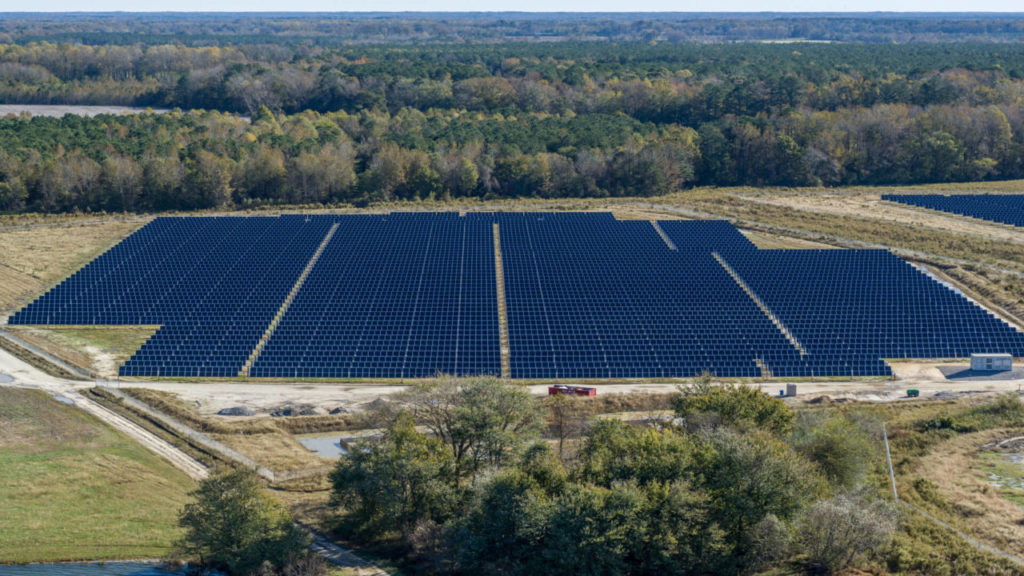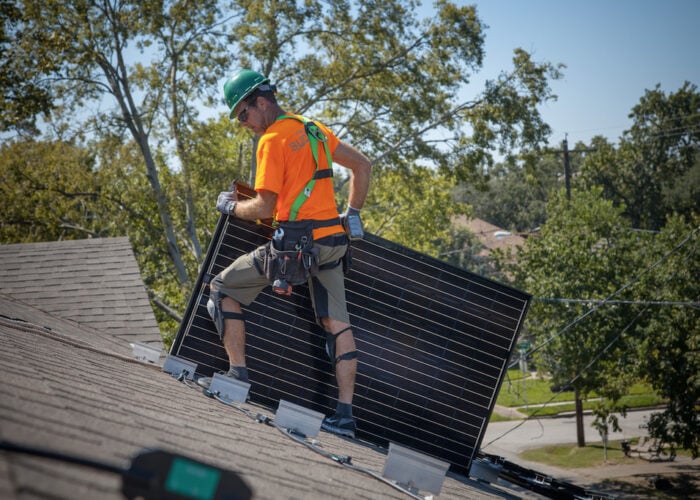
Even though the solar industry is in constant evolution with new technologies brought into the market, from modules to trackers, one aspect of it that seems to be anchored in the past is operations and maintenance (O&M).
The way a site is being handled has not changed much in the past few decades as was already the case with wind, and even gets overlooked explains Chris Stacy, director of business development at BayWa r.e. in the US. “Everything else has developed except for O&M, because it gets overlooked.”
Unlock unlimited access for 12 whole months of distinctive global analysis
Photovoltaics International is now included.
- Regular insight and analysis of the industry’s biggest developments
- In-depth interviews with the industry’s leading figures
- Unlimited digital access to the PV Tech Power journal catalogue
- Unlimited digital access to the Photovoltaics International journal catalogue
- Access to more than 1,000 technical papers
- Discounts on Solar Media’s portfolio of events, in-person and virtual
David Barnes, managing director at BayWa r.e. operations services, adds that for O&M to change it needs to be more predictive rather than reactive. The company has been looking at how to use data to better operate a solar plant, and see which aspects of it are underperforming out in the field.
“It is about getting the right data, how we look at the data and having the right tools in the background.
“Because it isn’t always looking for something that’s faulted or broken, it can just be not adjusted right. It may not be calibrated right. Maybe the trackers aren’t tracking as it shows in the data,” explains Barnes.
One of the tools that continues to be installed in projects are weather stations – also known as met stations – which collect solar irradiance, wind speed and temperature. These tools are usually designed and implemented as a one-off, says Roger Keyes, performance engineer at BayWa r.e., and usually implemented by the developer or the contracted engineering, procurement and construction (EPC) company.
“They’re not really the right piece of equipment going forward into the O&M stage of the project. That’s kind of the traditional mindset, we’ll keep all these existing instruments and just push them through the life of the project. When that’s really not, at least from a cost perspective, not the best thing to do,” explains Keyes.
For that reason, the O&M division of the company looked at other alternatives that would be less expensive, while providing the same amount of data and accuracy. The solution BayWa r.e settled with was the use of satellite data.
Satellite data can get the data a weather station was collecting, remotely, while corroborating it with ground-based measurements, within the requirements of accuracy needed at the O&M stage. That data in itself can then be used to actively train and monitor sites in real-time.
“Obviously, not every project is the same, there might still be requirements for physical met stations. But we decided to switch most of our portfolio over satellite data with some pretty good results. It saved a lot of time on the engineering side, messing around with missing and erroneous data and those kinds of things,” adds Keyes.
The main challenge for an O&M company regarding the use of satellite data over weather stations is that the former are still not as “perfectly” accurate as weather stations for the use of performance tests at the development phase.
“That’s the main reason. You need good high-quality instruments at first to usually gear the plant’s life and to satisfy the development EPS. These are millions of dollar contracts with big liabilities and fees if you don’t meet the performance. So they’re not as willing to rely on something like satellite data that’s not very unique and specific and accurate,” explains Keyes, adding that a solution could be renting these instruments for that phase of a project, and later on switching to satellite data. This in itself could allow for costs to be reduced in the long run.
The costs of maintaining these met stations can be expensive even for smaller projects, says Keyes giving the example of a 30MW portfolio of more than 13 sites which would require around US$60,000 just to fix the existing stations. Just for a one-time cost without taking into account other costs related to fixing these stations such as lab costs or labour, while the use of satellite saves both time and cost – Keyes says the cost was around US$10,000 – and provides more help for engineers.
“That time that we used to spend doing all those things with the met stations, we can now spend doing tasks and activities that directly impacted the generation and the performance of the plant,” adds Keyes.
The importance of consistent weather data
With the use of satellite data, it also brings a consistent stream for weather data that helps better understand and analyse the performance of a solar site. “We’re trying to figure out how much energy or how much power should our plants make. And why aren’t they making that? You can’t do any of that analysis without good, consistent weather data,” explains Keyes.
Collecting information about irradiation, wind speed, rain and temperature gives a better overview of a plant’s performance or underperformance and from there looks into the issues. Not only that but collecting that data can also help the O&M company when it is best to wash the modules and avoid an unnecessary trip to the field if it is going to rain in a few days after washing the panels.
“The old theory that we should just come in and wash the whole project is really kind of a complete waste of money if it’s going to rain in two weeks from now. You have to be able to get back the price of the wash in the added production before the next rain, or it made no sense whatsoever, you’ve actually just lost money,” says Barnes.
Combining the data collected with software tools allows an O&M company to better understand and make the right decision as to whether wait a little bit longer before washing the modules or if the performance is too low.
“What we see a lot is people want to know how many times they have to mow, and how many times they need to wash their panels. That is such a huge cost that they don’t know going into it on the development side. And it could really mess up your pricing models on the development side on what the whole financial model the project could look like,” says Chris Stacy, director of business development at BayWa r.e..
Using sheep to reduce mowing costs
As previously covered on PV Tech, interest in agrivoltaics in the US has been on the rise last year and was a recurring topic of conversation at RE+ 2023 in Las Vegas, with its implementation in community solar and utility-scale projects increasing such as sheep grazing, which can save a lot of money in terms of operations and maintenance. Especially in big utility-scale projects to the scale of between 25-30% from a more traditional mowing, says Barnes.
“On the long term side, the lower cost of operating using sheep, right now we think is about anywhere from 25% to 30% of what it costs to traditionally mow. It’s probably somewhere in the neighbourhood of 100-150 bucks an acre, to run sheep, while you’re looking at anywhere from 150 to 400 bucks an acre to mow one time,” explains Barnes, adding: “When you’re trying to move hundreds or 1000s of acres, it becomes a very big expense. Maybe one of the biggest expenses.”
Mowing a solar project is not a once a year operation but has to be done at least three to four times, depending on the region in the US, using sheep to the work instead could allow a project to save hundreds of thousands of dollars in mowing costs in large-scale solar projects.
“If you think about the cost of mowing, I can give you an example, we have a project in Texas, it’s about 1800 acres. It costs us a little over US$300,000 to mow one time. And we pretty much have to mow it three times a year. So you’re looking at a million dollars in grass mowing.”
Adding an agricultural element to a solar project is not just beneficial in terms of reducing O&M cost, as once its lifetime comes to an end, the land ends up in a better shape than it was at the beginning, adds Barnes.
Both the use of satellite data and sheep grazing are two good examples of how O&M can help save costs for a project that is operational and that might not be taken into account while at the development stage and could make a project lose both time and money if overlooked.
“What we’re trying to emphasize to the market is that the ball keeps bouncing, and everything that you did, and all that money you spent and all that effort to get a project built, could be completely destroyed if you do not have a great plan on the O&M side and someone who truly knows how to take care of it,” says Stacy.







